Liquidations in DeFi — how they happen and how to prevent them
Breaking down the liquidation mechanisms in MakerDAO, Compound and Aave and showcasing the tools you can use to keep your positions safe.
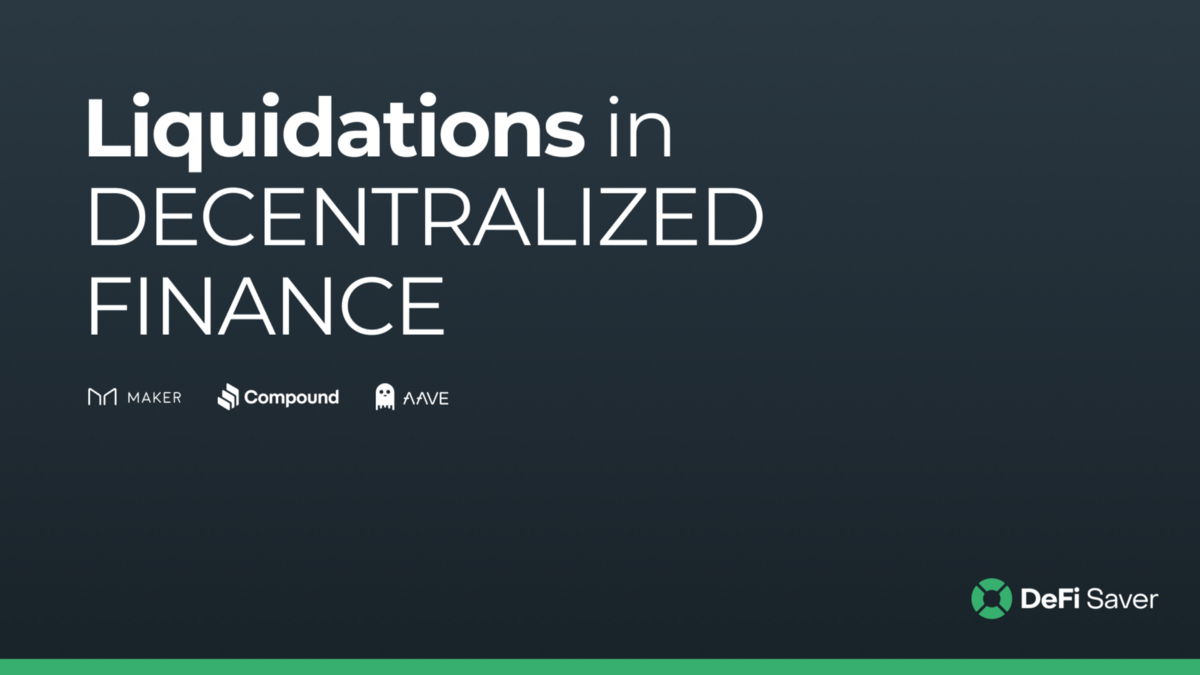
With millions upon millions worth of collateralized assets liquidated over the past few years in decentralized finance, we feel that it is of utmost importance to help spread the information on how the liquidation processes in most popular DeFi lending protocols work and, perhaps even more important, how users can prevent liquidations from happening for their positions.
Historically, although some liquidations happen pretty much daily, larger liquidation events usually happen in waves. One of the greatest such events so far was definitely the infamous Black Thursday.
On Thursday, March 12 2020, there were a total of 3994 liquidations in MakerDAO, with over $10m worth of collateralized assets liquidated on that day alone. Additionally, the Black Thursday crash also resulted in over $5m of liquidated assets on Compound and close to $550k on Aave.
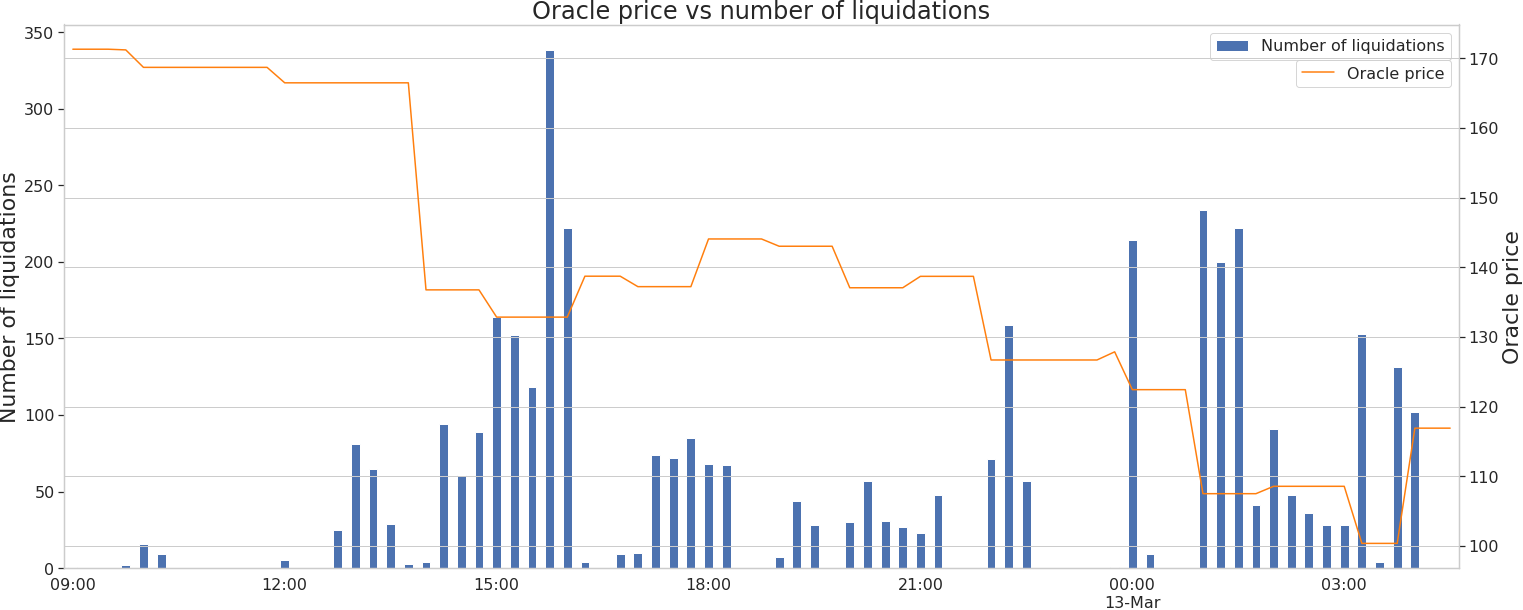
While events of this scale don’t happen often, we believe it’s crucial for all DeFi users to be aware of potential liquidation, as well as the differences between the different liquidation mechanisms in the most popular lending protocols.
Without further ado, let’s go through these processes one by one, starting with Maker.
MakerDAO liquidations
In Maker, the most important value for a CDP/Vault is the collateralization ratio, as this is what the system considers as the liquidation point and each collateral type has its own minimum collateralization ratio.
For ETH specifically that’s 150% (and you can check all others at DeFi Explore). Allowing your position to fall below the minimum collateralization factor will result in your CDP being liquidated.
Once your collateralization ratio falls below 150% that allows anyone to call a “bite” on your position, effectively locking your collateral and starting the liquidation auction. The tricky part with Maker liquidations is that your whole position gets locked at this point and it’s not until the whole collateral auction ends that you’ll actually know what amount of collateral you’ll be left with. And the duration of these auctions has been set at 6 hours ever since Black Thursday.
We won’t get into too much technical details (since we already did in this post), but the fact that your whole position gets liquidated, together with the relatively long auction duration, makes the outcome of a MakerDAO liquidation potentially quite uncertain, with the final penalty often being greater than the expected 13%.
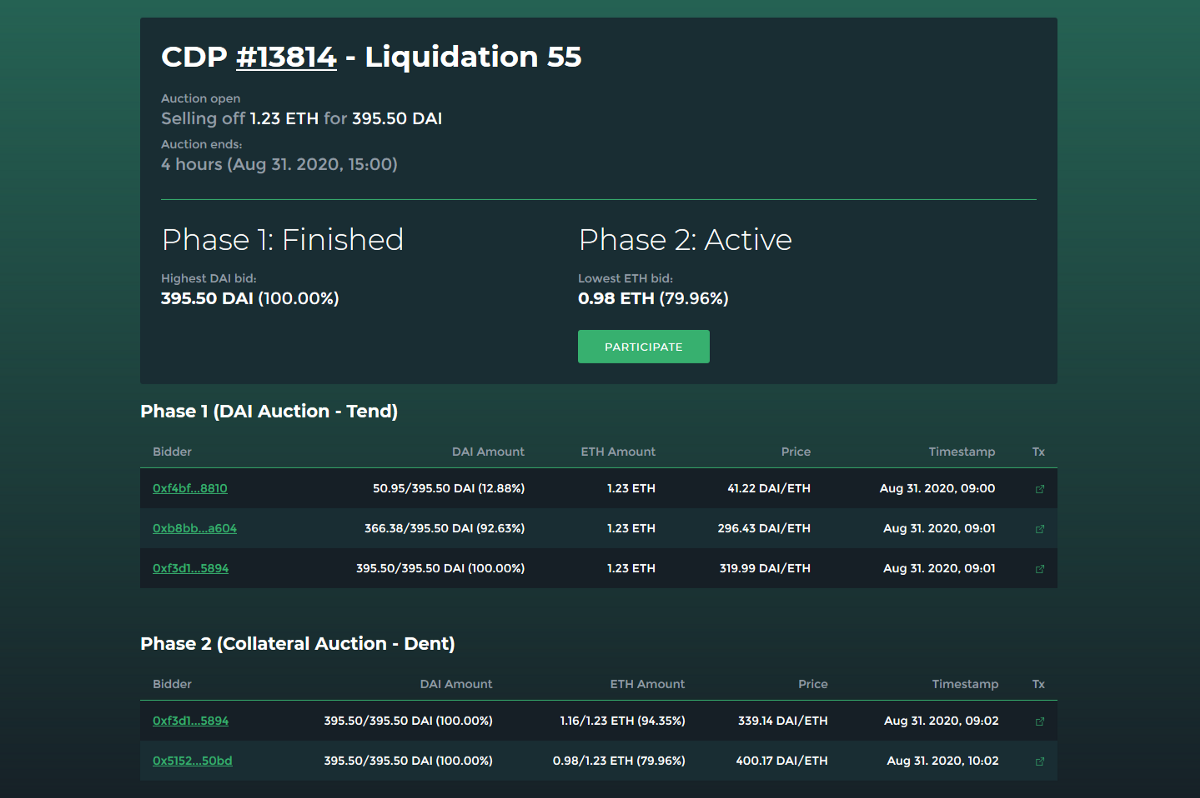
The example liquidation shown above is for a relatively small position, but if we run the math on the current bid the penalty would be around 13.8% for the CDP/Vault owner. This often gets to 14–15% even in times of low volatility.
It should be noted, though, that MakerDAO governance is making improvements to the liquidation process as we speak. The Liquidation System 1.2 upgrade is currently being voted in and there are other changes that are being discussed.
Compound liquidations
In case of Compound, the liquidation process is noticeably different.
Firstly, your position cannot be bitten for the whole 100%. Instead, the maximum portion of your position that can be liquidated is 50%.
Secondly, there’s no auction process like the one in MakerDAO. Instead, a single liquidator will simply liquidate a specific position, at the discount rate allowed by the protocol.
Finally, the liquidation penalty (or the discount bonus as previously mentioned, depending which way you look at it) is fixed at 8%. This has actually been increased from 5% after Balck Thursday, but it is still considerably lower than the penalty in Maker.
Overall, the combination of all these factors makes the outcome of a liquidation in Compound more predictable, which we believe is a very positive thing.
The information on Compound liquidations is unfortunately somewhat hard to find in one place, but I should note that all of this was confirmed as correct in the Compound discord.

There used to be an UI available for tracking or executing Compound liquidations, but it seems that it’s not been updated for a while and is currently not usable.
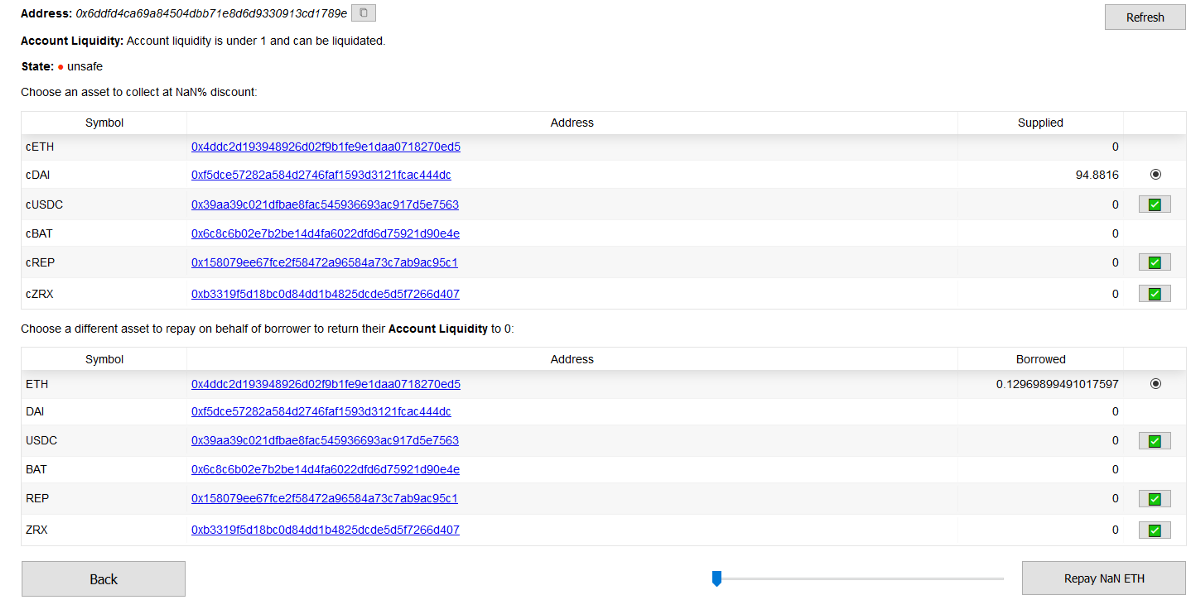
While the screenshot above should still provide some additional insight into how a Compound liquidation works, please note that this specific UI seems non-functional at the moment so definitely don’t try using it.
Aave liquidations
When it comes to Aave, the liquidation process works in a very similar way.
Just like in Compound, no more than 50% of a position can be bitten at a time and there are also no auctions — any single person can liquidate an unsafe position and win the collateral at the allowed discount rate.
However, there are a few interesting differences worth noting.
Firstly, the liquidation penalty varies depending on the asset used and ranges from 5 to 15%. For ETH specifically it’s 5%, so the lowest of the three protocols.
Secondly, Aave has introduced an additional liquidation threshold, a sort of a safety leeway, on top of the maximum loan-to-value ratio, that also varies from asset to asset. This means that when a user hits 100% of their borrow power used, they just won’t be able to borrow any more funds, but still have some room left until liquidation (contrary to Compound, where your position becomes unsafe as soon as you hit 100%).
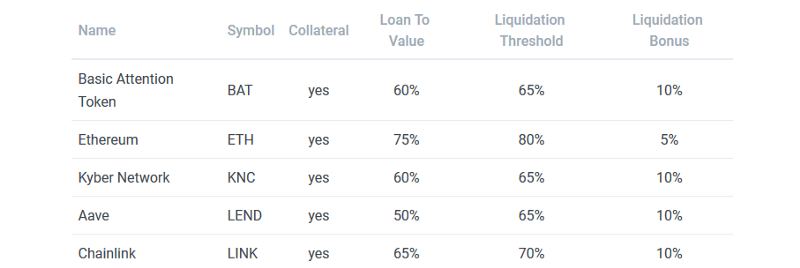
All of this is thankfully very well documented in the Aave Risks parameters page.
Additionally, Aave also provides an interface for liquidating undercollateralized positions right there in their main app. Here’s a screenshot of one position that’s currently undercollateralized and available for liquidating.

Finally, if you would like to check statistics on historical liquidations in Aave, you can use Aavewatch at https://aavewatch.now.sh/liquidations.
Different liquidation processes compared side by side
Overall, while the penalty is different across all three protocols, it’s always an undesirable event, although some protocols would definitely make it less painful in their current setup.
Here’s a quick comparison of all three protocols for an ETH position:

When compared side to side, Aave definitely stands out as the inherently safest option, but the Maker protocol still remains by far the most popular option for users to lock up ETH into as collateral.

Be that as it may, liquidation remains an unwanted outcome no matter which protocol you decide to use. So let’s cover some of the ways you can prevent it from happening in the first place.
Ways to prevent liquidation
The two basic things that one can do to make their position instantly safer is either add more of the supplied collateral or pay back part of the debt. Doing either of these will increase their collateralization ratio and decrease their debt power used.
However, this may not always be possible. If you’re using any of these protocols to leverage an asset, for example, it means you likely don’t have any of the borrowed funds with you, as they’ve been used to increase leverage instead.
Not to worry, though, as there are still multiple methods and tools available that you should know about.
Monitoring the next price update (MakerDAO only)
Thanks to the unique way price oracles in MakerDAO operate at an effective 1-hour delay there is one very simple technique that can be utilized for liquidation protection — observing the next price update.
We won’t go too much into details here (because we already did in this post explaining the new Maker Oracles system), but the tl;dr is that you can know if your CDP/Vault will be liquidated a full hour in advance. This is a relatively long amount of time for one to react and readjust their position to prevent liquidation from happening.
The next price in MakerDAO exists for all supported collateral types and you can check all currently scheduled price updates using the DeFi Saver MakerDAO dashboard, DeFi Explore or Dai Stats.
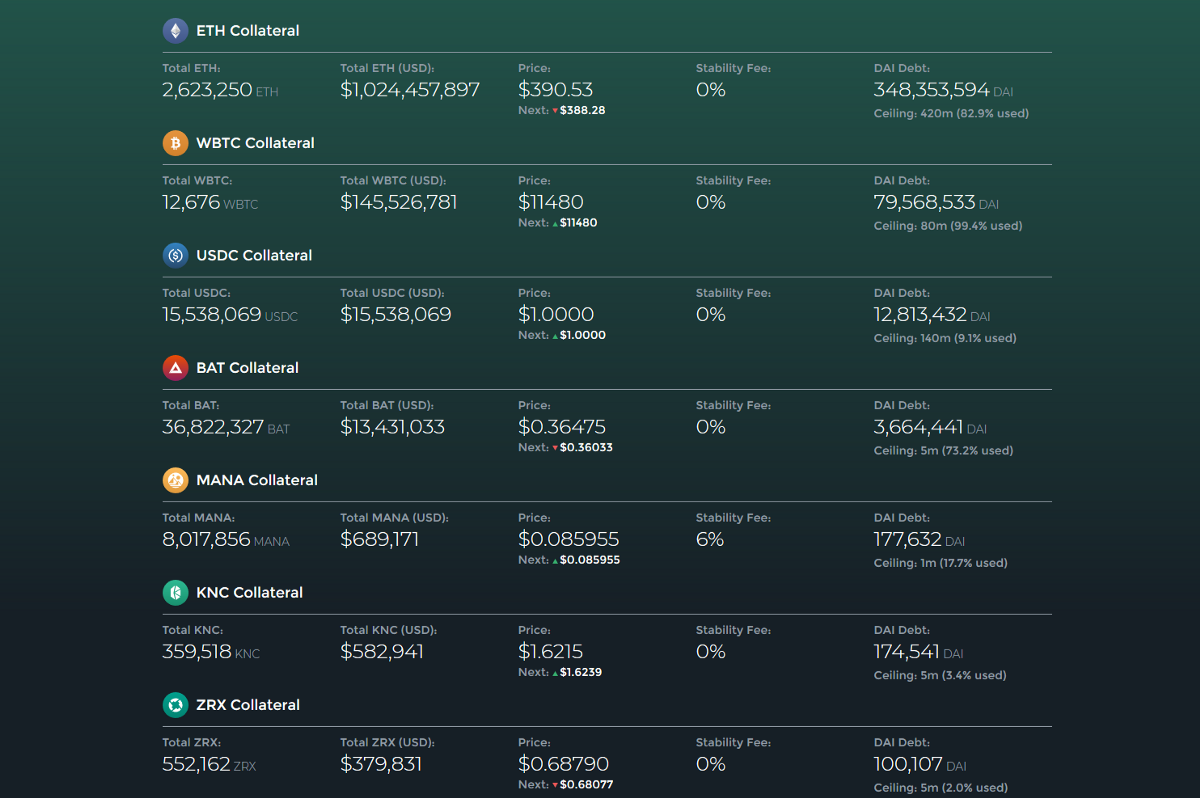
As long as you adjust your CDP so that its liquidation price is below the next price update in a timely manner — you will be safe.
Using Repay to unwind your position and reduce debt (MakerDAO, Compound and Aave)
Since many people use these lending protocols as a decentralized mechanism to achieve leverage, be it to short or long certain assets, it’s often the case that users don’t actually hold the funds that they borrowed.
In this case, there is the option of paying back debt using already supplied collateral, by partially (or completely) unwinding the existing position.
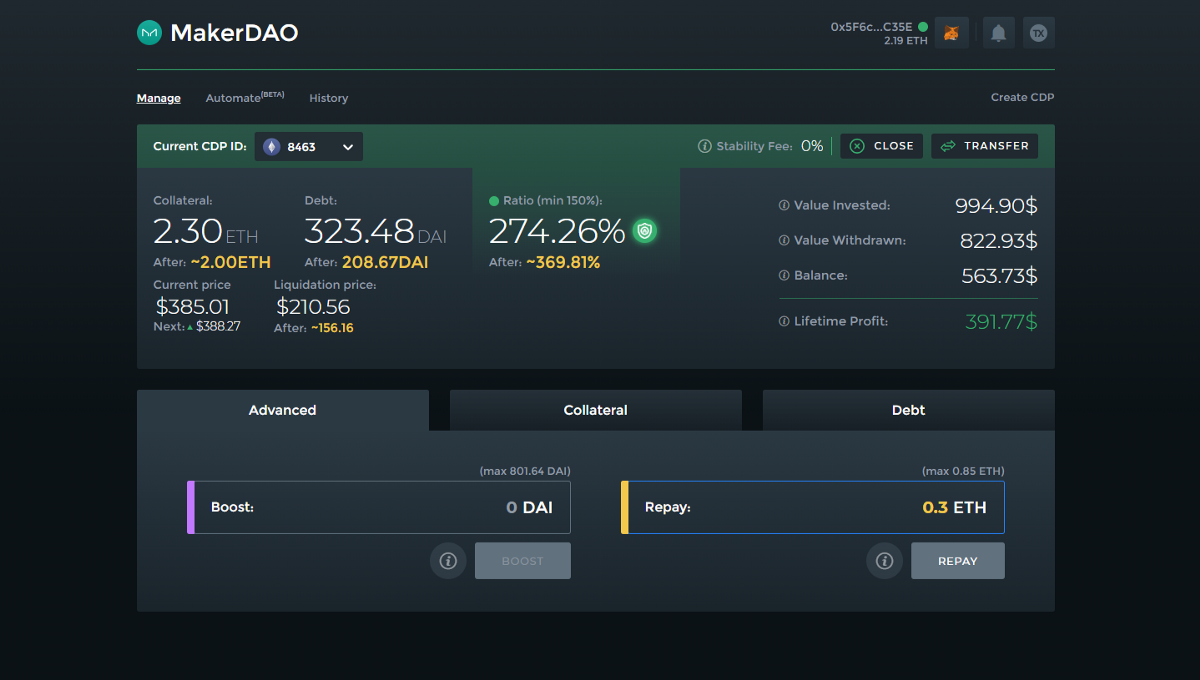
This option is called Repay and it’s available for MakerDAO, Compound and Aave in the respective dashboards in DeFi Saver.
Repay does three things in one transaction:
- Takes out your supplied collateral (e.g. withdraw ETH)
- Swaps these funds for the borrowed asset (e.g. exchange ETH -> DAI)
- Uses these new funds to pay back debt (e.g. pay back DAI debt of a CDP)
Repay for MakerDAO is fairly simple, as you are always using one of the supplied collateral types to pay back DAI debt. But for Compound and Aave, Repay can actually be used with any pair of supplied/borrowed assets.

This is a feature that works great together with observing the previously mentioned next price update for MakerDAO users.
Finally, it’s important to note that Repay is a feature that can be used both as a means of protecting against liquidation, as well as an option to close out a profitable position after an upward market movement.
Using Automation for automatic liquidation protection (MakerDAO and Compound)
While both of the previously mentioned options can be very effective, there’s always the question of when an actual crash might happen. Will you be sleeping, offline on a plane or on a biking adventure in Thailand?
This is where our Automation service steps in as the ultimate solution that continuously monitors your position and automatically Repays debt in case the market starts going down.
Automation is a unique non-custodial and trustless system that allows you to configure automated debt position management, all while staying in ownership of all your funds.

When it comes to liquidation protection, Automation effectively allows you to configure a minimum allowed ratio for your position. Once enabled, Automation will continuously monitor your position and as soon as it drops below your configured minimum ratio, it will automatically execute Repay on your behalf.
For more information on how Automation works or how you can set up, we recommend checking this article (for MakerDAO) and this post (for Compound).
Unfortunately, Automation is currently not available for Aave, but this should change in the next two weeks, as work is already underway on Aave support. Make sure to follow the DeFi Saver Twitter account to not miss this release.
We hope this post provided more insight into the different liquidation processes in decentralized finance. Although it’s not an often covered topic, we really believe it’s necessary to spread information about this as much as possible.
If you have any additional tips on protecting against liquidation that you think we should include, please don’t hesitate to jump into our discord, we’ll be glad to update this article with more options in the future.
Stay connected:
🌍: DeFiSaver.com
💬: Official Discord
📢: Official Twitter



